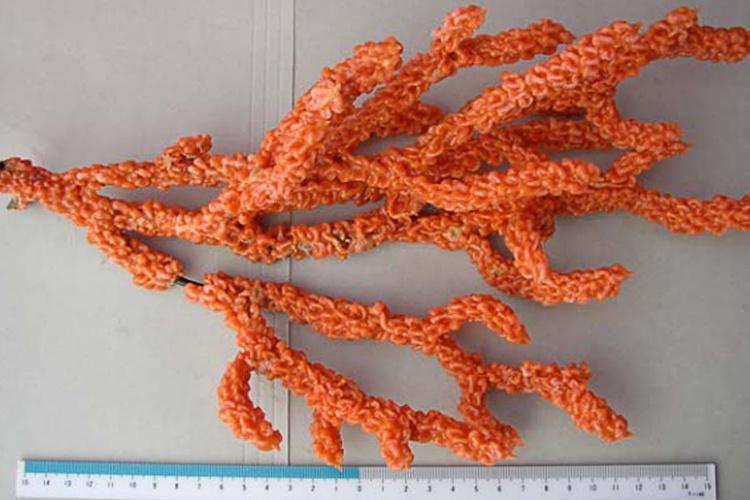Deep-sea corals are widespread throughout Alaska. The highest diversity of corals in Alaska and possibly in the North Pacific Ocean is the Aleutian Islands. The most abundant deep-water non-reef building corals in high-latitude systems in the world are found here.
Catch data collected during annual research trawl surveys is our primary source of information for understanding where corals are in Alaska. Other data comes from commercial fisheries bycatch records, which are collected by fisheries observers. Opportunistic video footage is collected from submersibles and ROVs during research studies. It has provided fine-scale data on coral distribution, habitat characteristics, species associations, and disturbance from both human and natural causes.
Alaska Deep-Sea Coral and Sponge Initiative
NOAA’s Deep Sea Coral Research and Technology Program sponsored a field research program in Alaska from 2012–2015. Information collected during this Alaska Deep-Sea Coral and Sponge Initiative supported North Pacific Fishery Management Council management needs for commercially important fish stocks.
Fifteen projects were conducted, including nine vessel surveys to map and collect information and specimens from various areas along Alaska’s continental slope and shelf. In all, the 3-year initiative provided important new information. It addressed immediate management needs for coral and sponge ecosystems, such as the coral and sponge distribution mapping that was incorporated into the essential fish habitat 5-year review in 2017. It also addressed longer-term goals, such as attempting to measure differences in fish productivity inside and outside coral habitat. Equally as important, the Alaska Initiative raised new questions but provided new techniques that can be used to inform future research in Alaska.
One of the most important outcomes of the initiative was the production of field-tested maps of predicted occurrence of corals and sponges for the three major regions of Alaska. Predictive habitat modeling for deep-sea corals and sponges provides an important tool for understanding their distribution across Alaska’s huge geographic regions.
Aleutian Islands and Eastern Bering Sea Research
In the Aleutian Islands and eastern Bering Sea, models were produced based on historical bottom trawl survey data. These models were then field-tested and validated using newly developed underwater stereo cameras at randomly selected underwater locations/transects. The stereo-image capability allowed accurate measurements of size of both deep-sea corals and sponges as well as associated fish. Data and models developed during this work is helping inform management decisions on where fishing closures can be most effective. This will protect the oldest, most diverse, and densest coral and sponge communities.
In the eastern Bering Sea information was collected on the 2014 model validation survey. This information was useful in informing Council's decisions on petitions to close parts of the Pribilof and Zhemchug canyons.
The next regional research initiative for Alaska will be in 2020–2023. A new suite of research questions and projects will be addressed in this future initiative building on the success of the 2012–2015 initiative.
Additional Resources
- Habitat Research in Alaska
- Alaska Crab Habitat Research
- NOAA’s Deep Sea Coral Research and Technology Program



